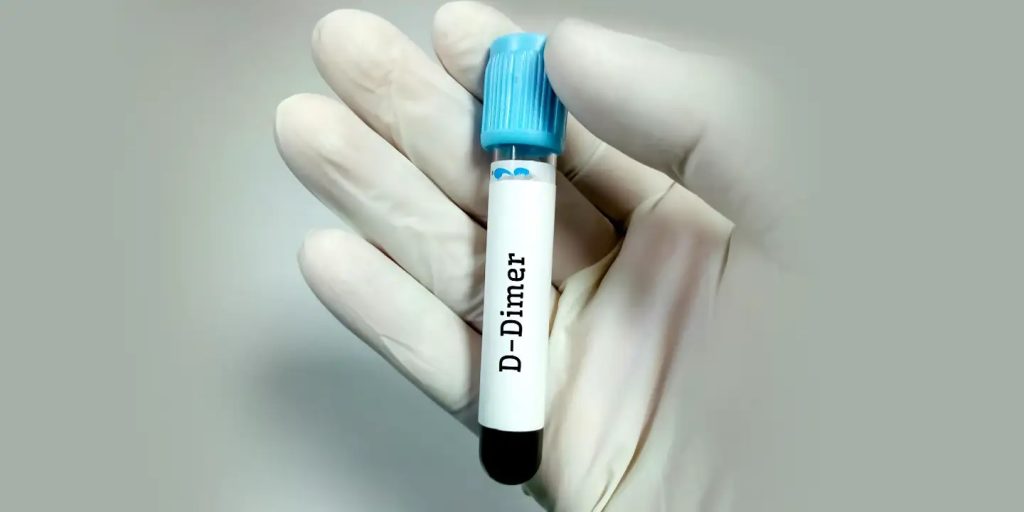As far as medical diagnostics are concerned, the D-Dimer test is of primary concern while investigating and diagnosing blood clotting disorders. Apart from that, this highly indispensable tool is also utilized by healthcare professionals to detect at the earliest and precisely any kind of thrombotic events that may take place. Knowing the usefulness of the D-Dimer test is a vital issue for doctors and patients who care about their health. In this comprehensive overview, we analyze the D-Dimer test, its function, various interpretations, and very important role in the diagnosis of blood clots.
What is the D-Dimer Test?
The D-Dimer test is a diagnostic method used to identify some molecules as D-Dimer which are present in the blood stream. D-Dimer are protein fragments that are released when blood clots are resolved in the body. In situations where a blood clot is created and then this clot is dissolved, it throws out the smaller chunks of the clot into the blood stream. Hence, increased D-Dimer level is a signal that reflects recent or ongoing clotting activity inside the body.
Role of D-Dimer Test in Diagnosing Blood Clots:
The main purpose of the D-Dimer test is to support the diagnosis of venous thrombotic diseases, including deep vein thrombosis (DVT), pulmonary embolism (PE), and disseminated intravascular coagulation (DIC). These conditions deeply affect health issues that need to be diagnosed and addressed in a timely manner to avoid any adverse outcomes.
Deep Vein Thrombosis (DVT):
Deep Vein Thrombosis (DVT) develops when a clot form one of the deep veins of the body, usually in the lower extremity. If not diagnosed early, DVT could cause severe complications including lung embolism. D-Dimer test is used along with other diagnostic tools to calculate DVT probability. Increase of D-Dimer levels above the set range may point to the presence of a clot in the veins, which necessitates further investigation and procedures such as ultrasounds.
Pulmonary Embolism (PE):
PE means pulmonary embolism which is a condition in which a blood clot is carried through the lungs to the pulmonary arteries and blocks the pathway. In the worst-case scenario, this health risk can be fatal, when not quickly detected and rectified. The D-Dimer test becomes a very useful tool in the early detection of pulmonary embolism in cases of suspected PE. Increased D-Dimer levels, in conjunction with clinical signs and imaging findings, form the basis for clinicians working out the possibility of pulmonary embolism and determining further management.
Disseminated Intravascular Coagulation (DIC):
Disseminated Intravascular Coagulation (DIC) is a condition that occurs all over the coagulation cascade, which results in both thrombosis and excessive bleeding. The D-Dimer test is usually the case of not only diagnosing, but also following the DIC condition, because the increased D-Dimer levels can reflect the clot formation process and fibrinolysis components being actively created. However, D-Dimer results should be interpreted along with other laboratory parameters of cytokine response, namely lymphocyte and platelet counts, and clinical suspicion to accurately rule out DIC and guide a patient management plan.
Interpretation of D-Dimer Results:
However, it is important to remember that increased D-Dimer level alone does not imply that clot is present yet but rather it is indicative of thrombotic activity. D-Dimer levels can be affected by different factors including age, chronic medical conditions, recent surgeries trauma and inflammation processing which can lead to false-positive results. Thus, doctoring of the D-Dimer test results solely for clinical assessment, medical history, and other diagnostic tests is the doctors’ duty for formulating an accurate diagnosis and treatment plan.
Conclusion:
Overall, D-Dimer test is a pivotal element in the diagnosis of both primary categories grouping DVT, PE, and DIC. Recognizing high levels of D-markers in blood is an essential tool to quickly identify thrombosis and plan appropriate burden-shifting therapies. But on the other hand the diagnosis based on the D-Dimer should be done cautiously with the clinical encounter to avoid the misdiagnosis and have better care delivery.

